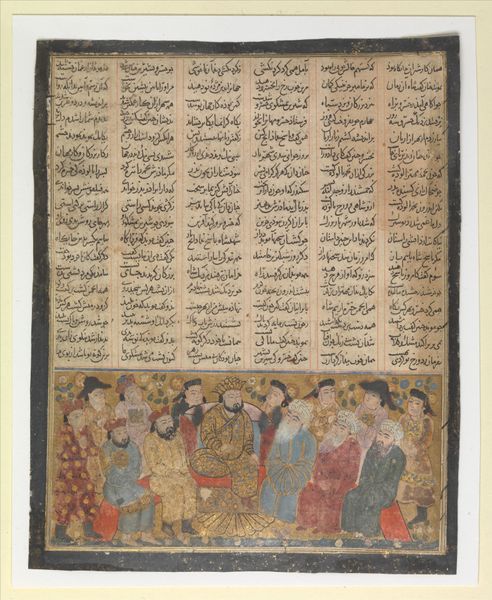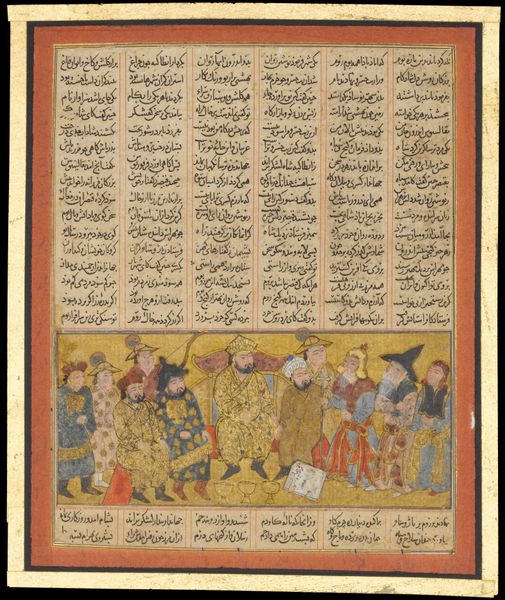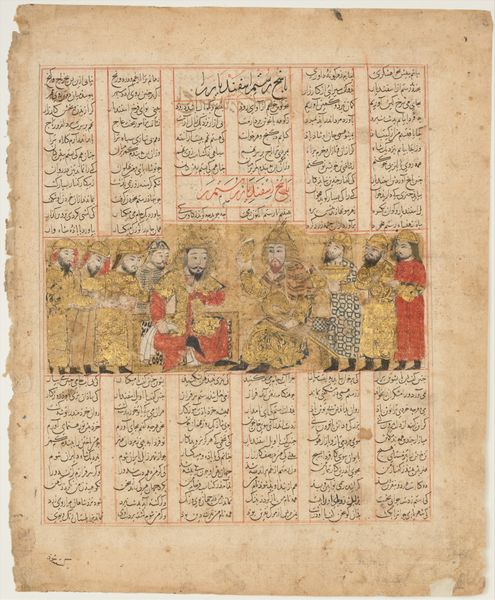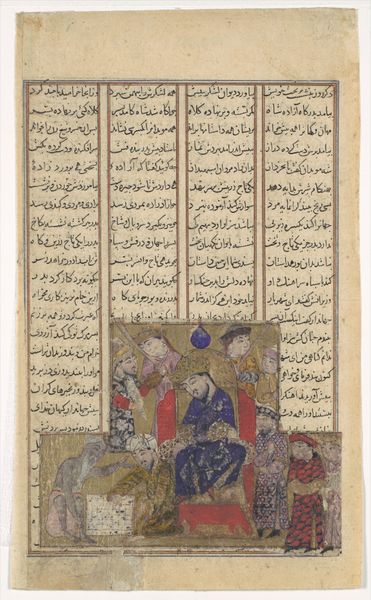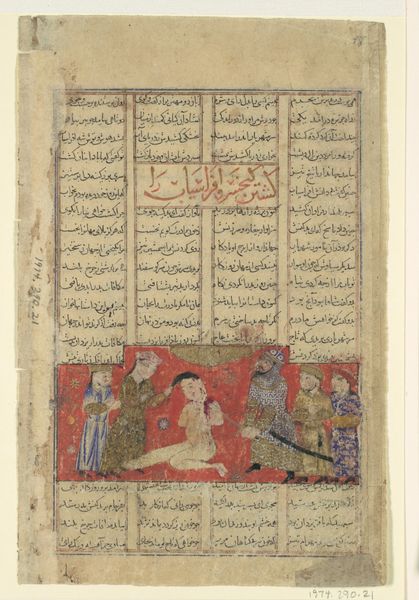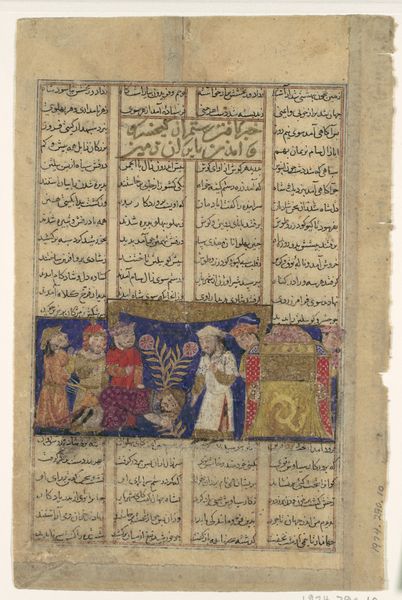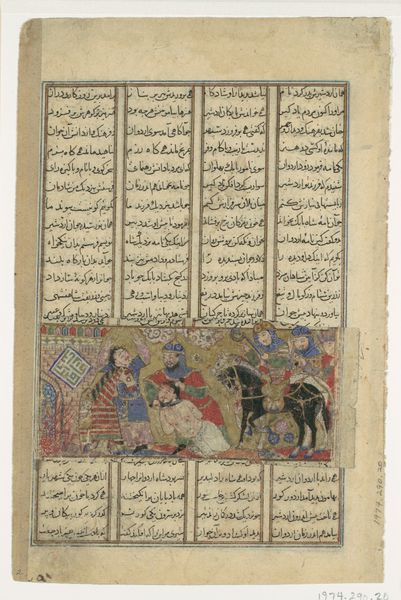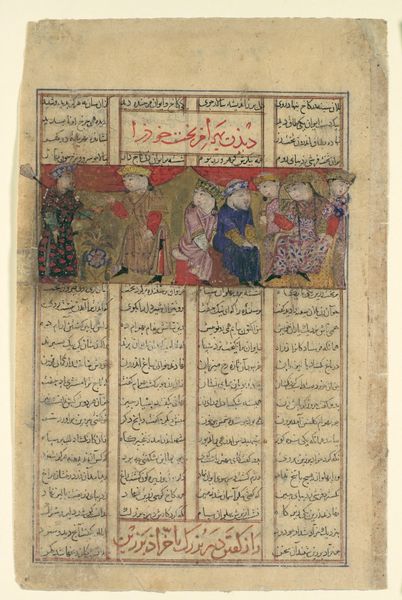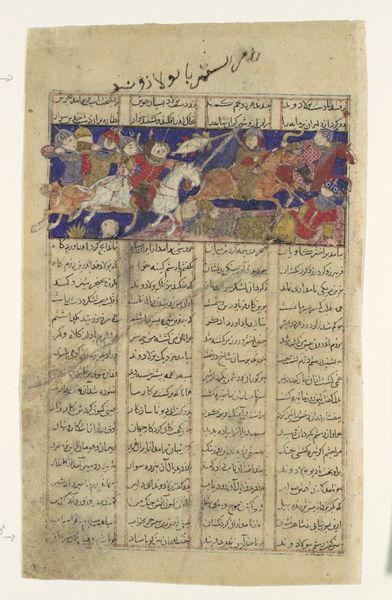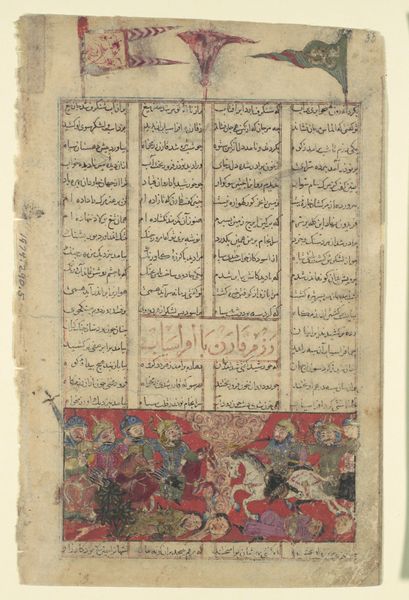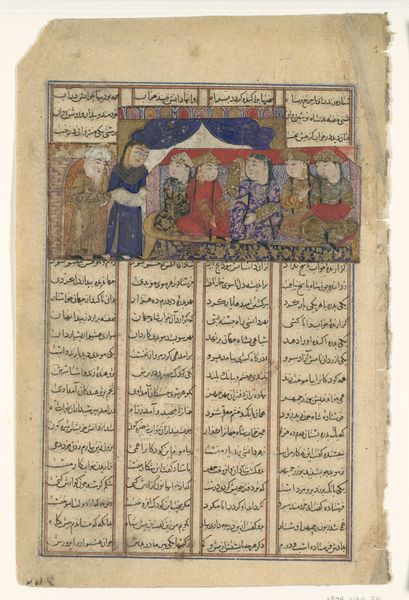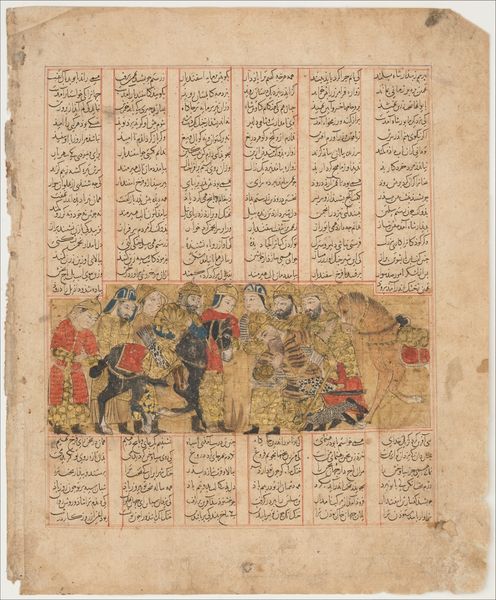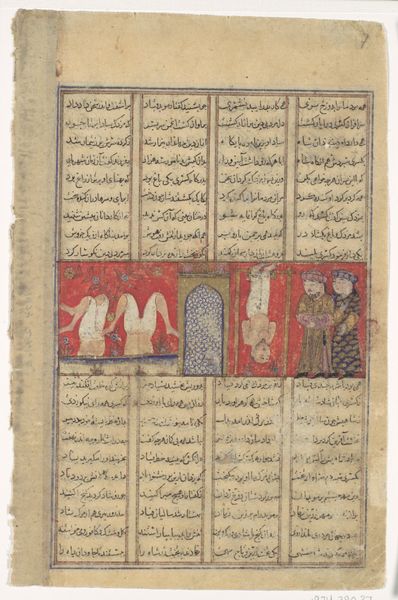
"Buzurgmihr Masters the Game of Chess", Folio from the First Small Shahnama (Book of Kings) 1275 - 1355
0:00
0:00
painting, paper, watercolor, ink
#
water colours
#
narrative-art
#
painting
#
paper
#
watercolor
#
ink
#
coloured pencil
#
traditional art medium
#
men
#
islamic-art
#
miniature
Dimensions: Painting: H. 1 15/16 in. (4.9 cm) W. 4 13/16 in. (12.2 cm) Page: H. 6 3/8 in. (16.2 cm) W. 5 1/4 in. (13.3 cm) Mat: H. 19 1/4 in. (48.9 cm) W. 14 1/4 in. (36.2 cm)
Copyright: Public Domain
Editor: Here we have "Buzurgmihr Masters the Game of Chess," a folio from the First Small Shahnama, dating from sometime between 1275 and 1355. It's currently held at the Metropolitan Museum of Art. The vibrant colors and intricate details create a lively scene. It feels almost theatrical, like a stage play frozen in time. What's your perspective on this piece? Curator: What strikes me is how this image serves as a visual record of cultural exchange and power dynamics. Chess, originating in India, became incredibly popular in Persia. Its inclusion in the Shahnama, the Book of Kings, underscores its importance to the Persian court. But consider this: who gets to control the narrative? By depicting Buzurgmihr, a Persian figure, as mastering the game, the painting subtly reinforces Persian intellectual dominance even as it acknowledges the game's foreign origins. Editor: That’s interesting! It’s not just about chess, but about power, right? Like saying, "We've not only adopted this, but we’ve mastered it.” Curator: Precisely. And look at the setting – the lavish garments, the attendants. This isn't just a game; it's a display of royal power and refinement. How do you think the socio-political context influenced the choice to depict this specific scene? Editor: I hadn’t really thought about the choice of scene itself. I was more caught up in the aesthetics. I guess depicting intellectual prowess on the chess board could serve to legitimize the ruler’s authority. Showing that the leader is capable of strategy, wisdom, right? Curator: Absolutely. Now consider where this folio ended up, in the Met in New York City. What does it mean for a Persian story, told through an illustrated manuscript, to now be housed and viewed within a Western art institution? What new layers of meaning emerge from that shift? Editor: It gives the piece a broader audience, hopefully sparking curiosity about Persian history. But it could also lead to misinterpretations or a focus solely on the visual elements, without grasping the cultural depth. I'll certainly view such artworks differently from now on.
Comments
No comments
Be the first to comment and join the conversation on the ultimate creative platform.
